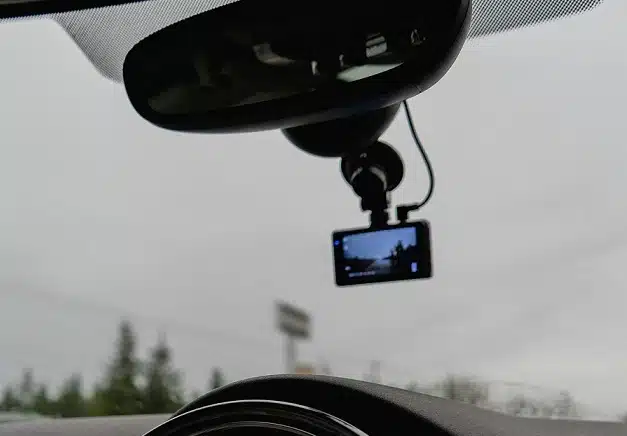Daytime running lights, often shortened to DRLs, are one of those vehicle features that many drivers notice but don’t fully understand. If you’ve ever wondered what does DRL mean on a car or whether these day driving lights actually improve safety, this guide will walk you through everything: from their purpose and benefits to regulations, recalls, and even aftermarket options.
1. What Are Daytime Running Lights?
Daytime running lights (also known as daylight driving lights or daytime running lamps) are forward-facing lights that automatically turn on when a car is running. Unlike headlights, which are designed to illuminate the road at night, DRLs focus on making the vehicle itself more visible to others during the day.
📌 DRL meaning (car context):
-
DRLs = a safety feature that improves vehicle visibility in daylight conditions.
These lights are sometimes confused with fog lights or headlights, but their role is visibility, not road illumination.
2. How Do DRLs Work?
The DRL system is designed for simplicity and consistency. In most modern cars:
-
DRLs activate automatically when the ignition is on.
-
They switch off when headlights are engaged or when the engine is turned off.
-
Drivers usually don’t control them, though some vehicles allow disabling through a DRL switch.
Common DRL Designs
| Type of DRL | How It Works | Best Feature |
|---|---|---|
| Low-Intensity Headlights | Dimmed versions of normal headlights | Cost-effective |
| Fog/Marker Lights | Repurposed for daytime use | Dual-purpose |
| Dedicated LEDs | Separate energy-efficient units | Stylish + long lifespan |
| Aftermarket Modules | Add-on kits for older cars | Flexible option |
3. Why Are Daytime Running Lights Important?
The benefits of running lights extend beyond looks. They play a measurable role in safety and efficiency.
Key Advantages
-
Enhanced Visibility: Cars with DRLs are easier to spot in bright sunlight, fog, or rain.
-
Accident Reduction: Studies link DRLs to a 5–10% drop in daytime collisions.
-
Longer Bulb Life: DRLs often use reduced wattage, protecting the main headlight bulbs.
-
Modern Styling: LED DRL lights add a sleek, premium appearance to vehicles.
Quick Fact: In countries like Canada and Scandinavian nations, daylight running lights are mandatory because of their proven safety benefits.
4. Regulations, Safety Issues, and Recalls
While the U.S. does not mandate daytime running lamps nationwide, automakers often include them voluntarily. This has led to recalls when systems malfunctioned.
Recent DRL Recalls
-
GM (2022): Over 740,000 vehicles recalled when DRLs stayed on with headlights, creating potential glare.
-
Lincoln Navigator (2024): Re-recall due to DRLs and marker lamps not lighting consistently.
-
Nissan Frontier (2025): 13,000+ trucks recalled after DRL lights dimmed unexpectedly due to software.
5. Can You Add DRLs to Your Vehicle?
Yes. Aftermarket kits make it possible to install daytime running lamps even if your car didn’t originally include them. Installation typically involves wiring into the ignition system—straightforward for experienced DIYers but often best handled by a professional.
Replacement & Aftermarket Options
-
DRL bulbs: Available in halogen, LED, or fog-light conversions.
-
Complete lamp assemblies: Replace faulty or outdated DRLs with OEM or aftermarket units.
-
Fleet-level upgrades: Businesses managing trucks or assets often pair DRLs with GPS truck tracking solutions to improve both safety and operational efficiency.
6. DRLs and Fleet Management
For companies operating large fleets, visibility is a safety priority. Daylight running lights ensure vehicles are noticeable on busy roads, while pairing them with advanced fleet GPS trackers offers complete oversight—tracking location, fuel use, and driver behavior.
Additionally, businesses managing valuable equipment often use GPS asset trackers alongside DRL-equipped vehicles. This combination reduces risks of accidents and asset loss.
7. Quick Comparison: DRLs vs. Other Vehicle Lights
| Feature | Daytime Running Lights (DRLs) | Headlights | Fog Lights |
|---|---|---|---|
| Purpose | Visibility during the day | Nighttime illumination | Enhance low-visibility driving |
| Operation | Automatic with ignition | Controlled by the driver | Controlled by the driver |
| Energy Use | Low | Moderate-High | Moderate |
| Style Impact | Modern, sleek | Standard look | Functional |
8. Conclusion
Daytime running lights may seem like a minor feature, but they represent a blend of safety, efficiency, and style. Whether you call them DRLs, daylight running lights, or daytime running lamps, their role in reducing accidents and improving vehicle presence is undeniable.
For individual drivers, they’re a set-and-forget safety enhancement. For fleets, combining DRLs with GPS tracking solutions creates a comprehensive approach to road safety and asset protection.


